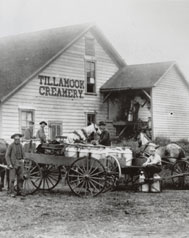Last night when I was checking my Google Alerts, I came across a job description for a Process Modler/Analyst position. In the Requirements Section it stated: “Experience with Lombardi Blueprint a plus.” It looks like Blueprint has arrived 🙂
Blueprint recognized Across the Pond
In other Blueprint related news, at the end of last year there was an article in ComputerWeekly.com in the UK about how Blueprint was used by a “US dairy giant” to overhaul its processing. The article focused on the Web 2.0 nature of the solution:
A huge dairy cooperative in the US, which supplies the likes of Wal-Mart, Safeway and Costco, has taken hold of Web 2.0 technology in order to reengineer its whole business.
Change came with the arrival of a new chief executive officer, who identified that IT could bring massive efficiencies to Tillamook in the form of business process management (BPM).
He gave Burge and his IT team his backing to investigate Web 2.0 technology, to see how it could be used to identify, capture and optimise the firm’s “tribal knowledge”, and drive down inaccurate information.
Tillamook examined several applications, including diagramming tool Microsoft Visio – which the firm found too complicated for its needs – but eventually chose Lombardi Blueprint.
Blueprint is at an inflection point right now. With the economy in the shape its in right now, we are seeing quite a bit of interest in a solution that can be paid for on a monthly basis and help drive costs down and efficiencies up.
Here’s to saving money!
Pau for now…



 Posted by Barton George
Posted by Barton George 
